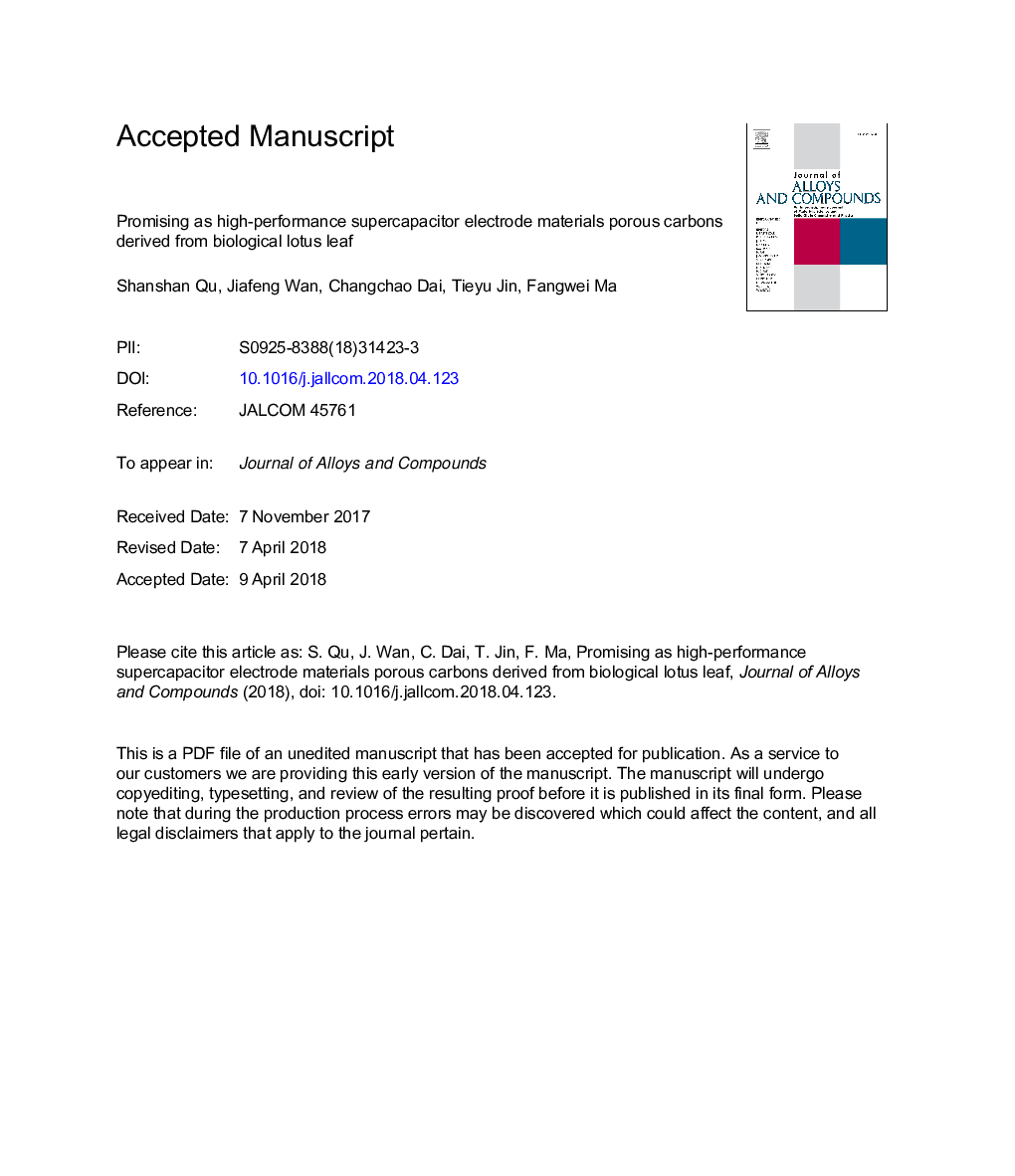| Article ID | Journal | Published Year | Pages | File Type |
|---|---|---|---|---|
| 7991659 | Journal of Alloys and Compounds | 2018 | 44 Pages |
Abstract
The lotus leaf, a renewable source of biomass, was successfully explored as a low-cost crude carbon source for preparing high-value lotus leaf porous carbon (LLPC) via carbonization and KOH activation. The synthesis method is simple, inexpensive and easily scalable. Testing and analysis showed that LLPC is a good supercapacitor electrode material with a microporous and macroporous structure, a specific surface area (SSA) of up to 2488â¯m2â¯gâ1, and a high content of oxygen heteroatoms. In a three-electrode system with 6â¯M KOH as the electrolyte, LLPC-800-1:3 exhibited a high specific capacitance of 379â¯Fâ¯g-1â¯at 1â¯Aâ¯gâ1 and good rate performance. At a current density of 20â¯Aâ¯gâ1, the specific capacitance still reached as high as 298â¯Fâ¯gâ1. Furthermore, after 5000 charging/discharging cycles, the capacitance retention rate was 90%. When the energy density of the electrode was 9.2â¯Wâ¯hâ¯kg-1, the power density was 491â¯Wâ¯kgâ1. The achieved electrochemical performance demonstrates that lotus leaves can function as a new biomass material for the production of high-performance supercapacitors and low-cost energy storage devices.
Related Topics
Physical Sciences and Engineering
Materials Science
Metals and Alloys
Authors
Shanshan Qu, Jiafeng Wan, Changchao Dai, Tieyu Jin, Fangwei Ma,
